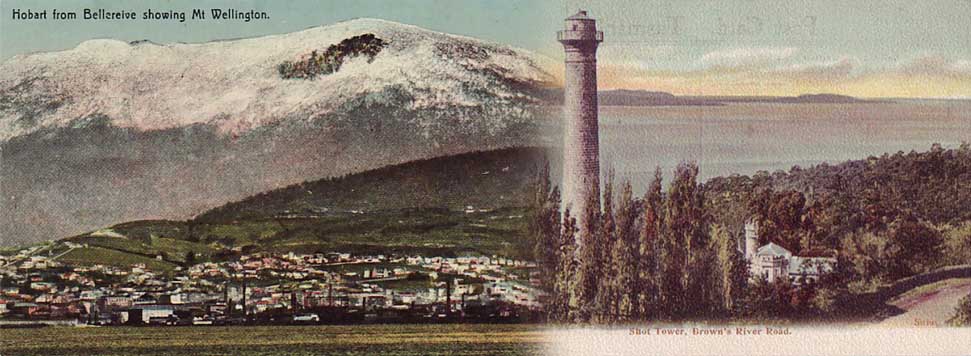John Watt Beattie (1859-1930), was born on 15 August 1859 in Scotland. He migrated to Tasmania with his parents and brother in 1878. After working on the family farm near New Norfolk for a few years, he moved to Hobart in 1882 and joined the studio of Henry and Joshua Anson as manager.
The Anson brothers had opened their business in 1880 when they acquired the Riise & Barnett (Elite Studio), which itself had been established in the 1840s. By 1892 Beattie had bought the studio and its photograph collection from the Anson brothers and it became Beatties Studio, and traded as such until 1993.
In the 1890s Beattie set up in Hobart a museum of art and artefacts concentrating on the convict history of Tasmania and Port Arthur and on the life and culture of the Tasmanian Aboriginals. He was appointed the colony's official photographer in 1896, (the Tasmanian coat of arms appeared on his postcards) and thereafter worked hard in support of tourism. He gave illustrated lectures with much success, and prepared sets of slides (with solid, informed commentary) for wider distribution. Tasmania's promise of health and minerals ranked high in his presentations.
Beattie made photographic expeditions into the wild, unsettled areas of Tasmania. He was at Hartz Mountains in 1894 and 1899, at Port Davey twice before 1896, Schouten Island and the East Coast in 1903, took photographs for Mt Lyell Railway in 1898, and visited the Furneaux Group c. 1908. He visited the Gordon River in 1907, which was six years after Stephen Spurling III had photographed there.
Many of the photographs produced under the Beattie’s Studios name were not the work of Beattie himself. It was considered legitimate at the time for photographs taken by studio assistants and apprentices to be released under the Beattie Studio name. Now, at this distance in time it is difficult to know which of Beattie’s photos and postcard images were produced by Beattie himself, his staff, or drawn from the images he had acquired when he purchased the Anson Brothers studio.
After Beattie’s death in 1930, the studio was taken over by Arch Stevenson. The studio continued under the directorship of his son Bill Stevenson and his grandson Bill Stevenson Jnr until 1993. At the time of writing (2019) the business still exists as Beattie’s Digital Studio, supplying digital versions of the Beattie photographs.
References
Long, Chris. 1995 Tasmanian Photographers 1840-1940. Tasmanian Historical Research Association and T. Hobart, Tasmaniaasmanian Museum and Art Gallery
Roe, Michael 'Beattie, John Watt (1859–1930)', Australian Dictionary of Biography, National Centre of Biography, Australian National University, http://adb.anu.edu.au/biography/beattie-john-watt-5171/text8687, published first in hardcopy 1979, accessed online 18 August 2019.
Stephenson, John. ‘Beatties Studio’, https://www.beattiesstudio.com/history-of-beatties-studio, Accessed 23 August 2019.
